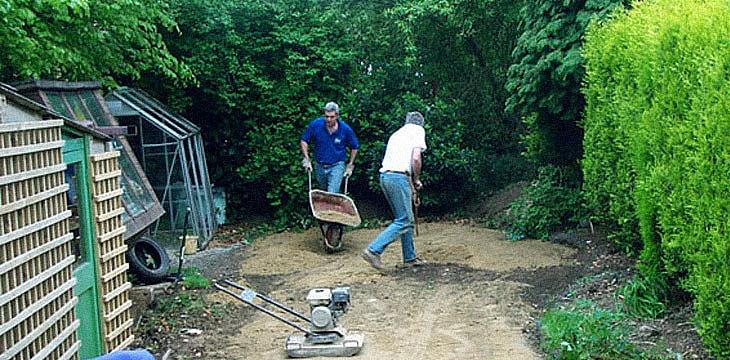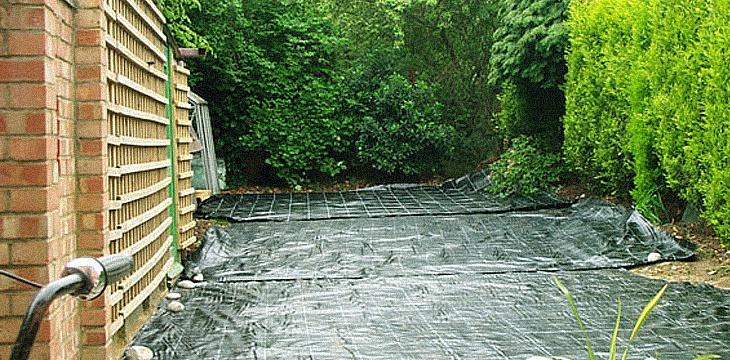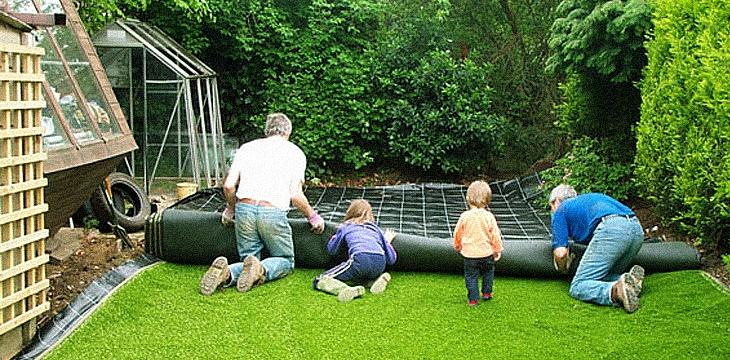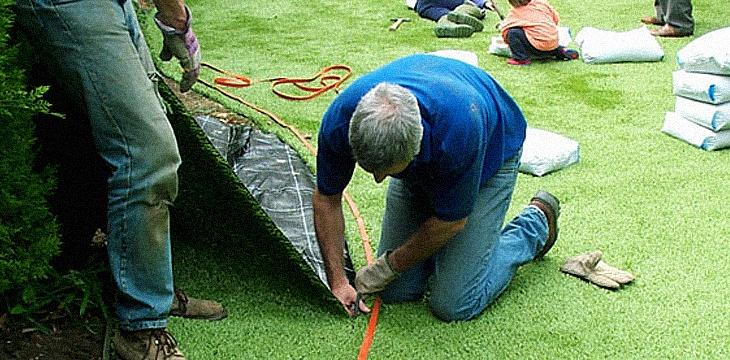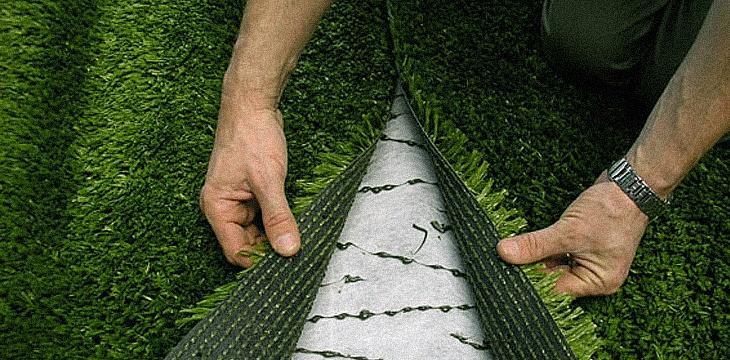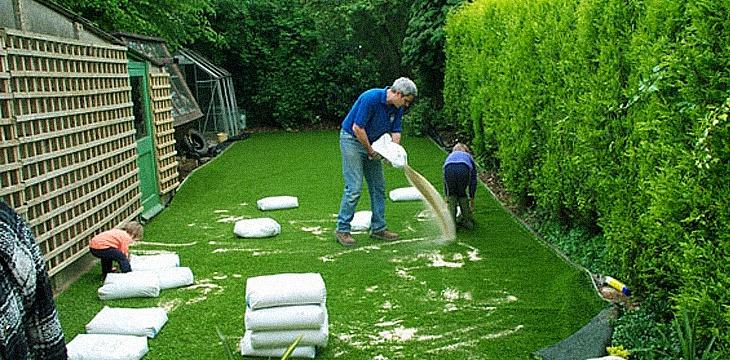Looking for a comprehensive DIY guide for installing artificial grass in your home or garden? We’ve put together the ultimate 'how-to' guide including fully detailed installation instructions for each step alongside a link to our concise and informative installation video to help. This way, you can be sure that you're following all the best practices for laying artificial grass on grass or soil.
In addition, we have included our useful project planner, which provides a grid space for you to plan and map out your garden before you purchase your grass. Utilising the project planner, it's much easier to only buy as much grass, jointing tape and adhesive as you need, reducing waste and saving you money.
Alternatively, our in-house artificial grass installation team provide professional artificial lawn installation services in the UK, covering areas of Kent, London, Essex and Surrey, saving you both time and effort with an unbeatable finish for your residential garden or corporate space. Get in touch with our team today if you would like further information:
- Essex Installation Service • Kent Installation Service
- London Installation Service • Surrey Installation Service
However, for those outside our installation catchment area, we've put together this easy and detailed guide on how to lay artificial grass over a grass or soil base. Following these instructions, you’ll be relaxing in your brand new artificial grass garden soon enough. Before launching into the process of installing your artificial lawn though, don’t forget to request your free artificial grass samples here, explore how much it might cost, and purchase your artificial grass.
Not sure which artificial grass would suit your home or requirements? We have also provided an in-depth guide to picking the best artificial grass for you.
Still undecided or simply need a bit of advice? Our sales team are standing by to take your call and we look forward to helping you through the process of choosing, purchasing, and installing your artificial grass. Get in touch with us via email at [email protected] or give us a call on 01474 364320. Our offices are open Monday to Friday between 9:00 am and 5:30 pm.
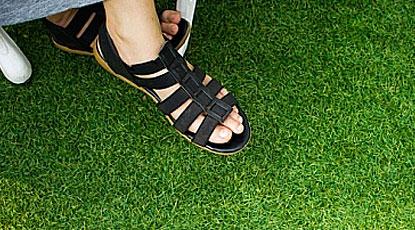


How to Use the Project Planner
Our project planner has been designed with busy homeowners in mind, making the process of planning out your artificial lawn requirements as easy as possible. Using our project planner, you can create a rough sketch of your garden and calculate the amount of artificial grass you will need to order for complete coverage, including installation accessories while reducing the amount of waste and cut-offs. No two projects are the same, and here at the Artificial Lawn Company, we believe that knowing the details in full prior to the start of any new project will ensure a more than a satisfactory end result.
- First, measure out your garden and plot the dimensions on the blank grid on the second sheet of the project planner. We've given a scale guide of 1m per square, but you can adjust it to suit your requirements. Keep in mind that our artificial grass rolls are supplied in metre lengths with a width of 2m or 4m. More accurate plotting reduces the potential amount of waste you may generate so make sure to take several measurements before making your sketch.
- Work out the most efficient way of laying your new artificial lawn, ensuring the fibre pile all face the same direction for the best quality finish and the most realistic appearance for your garden. Each of our supplied artificial lawn options is available in 2m or 4m widths and up to a length of 25m on a single roll.
- Once you have determined the most effective way of laying your new artificial grass, add up the total length of the joins. The length of the join between sections determines the length of the jointing tape needed. A tube of adhesive is required for every three metres of tape, so make sure to calculate how much adhesive will be required in order to install your new artificial grass surface. It is important that synthetic turf is laid correctly in order to continue reaping the benefits for many years to come.
- Place your order for your new artificial grass! Don't forget to include all the accessories you require in order to ensure a perfect, well-seated finish with no visible joins that will last for years to come. If you're ever unsure, please do get in touch and our professional team will be able to help you.
How to Lay Artificial Grass - Your Complete DIY Guide
Laying artificial grass correctly is vital to ensure that your lawn looks the best it can. If you're opting to do it yourself rather than using an installation service, make sure that you follow our nine-step process closely to guarantee optimal results, making your garden the envy of all your neighbors.
How to Maintain Artificial Grass and Keep it Looking Great
To ensure your artificial turf is kept in adequate condition and looks pristine all year round, some regular maintenance is required. At the very minimum, to ensure the longevity and bounce-back of your fake grass lawn, brush it frequently to remove any soil, dirt or debris. Leaf blowers can be used to good effect if you have lots of surrounding trees or greenery. You should also wash your new surface to remove any dust after installing artificial grass. Do not jet or pressure wash as this will remove and/or disperse any infill that is present.
Regular brushing with a stiff natural bristle broom will help to keep fibres straight and even, making for a long-lasting and healthy-looking artificial lawn. Avoid using anything with stiff metal bristles like a brush or metal rake as this can tear at your artificial grass, creating unsightly rips and holes. When brushing, it is best to brush against the pile of lawn to help lift the pile best you can.
We recommend occasionally loosening the sand on the surface with a spring rake and topping up as required - do not use a powered scarifier as this may damage the grass fibre. Hot items like barbecues shouldn't be placed directly on the surface, and you should avoid stubbing out cigarettes on the grass. Doing so will run the risk of damaging the fibres of the artificial grass, as well as causing the nasty odour of melting plastic. Be careful for things like garden mirrors which can burn the grass if the sun reflects off them onto the artificial grass.
To ensure upright, bouncy grass fibres that recover quickly after use, do not place anything heavy on the grass. Heavy items such as cars, large garden tools or motorcycles may also damage the soil below and run the risk of dripping motor oil which can permanently stain your artificial grass. In the event of snowfall, you should leave the snow to melt and avoid using chemical de-icers on the surface. Trying to force ice and snow from your artificial lawn can damage, rip and tear the individual fibres, making your artificial grass appear thinner and patchy in appearance. If your grass is in a particularly damp area, you can treat it with moss-killer annually. We recommend opting for a liquid-based solution containing dichlorophen.
Additional advice for dog owners - don't let your dog dig up the surface or pull at the edges. We advise removing any dog faeces as soon as possible by hosing down the area and gently brushing if required. During dry periods, we recommend hosing down the whole lawn in order to flush out residues. Lastly, unlike natural turf, a disinfectant can be applied to artificial grass, if necessary, to kill off any potentially harmful bacteria.



